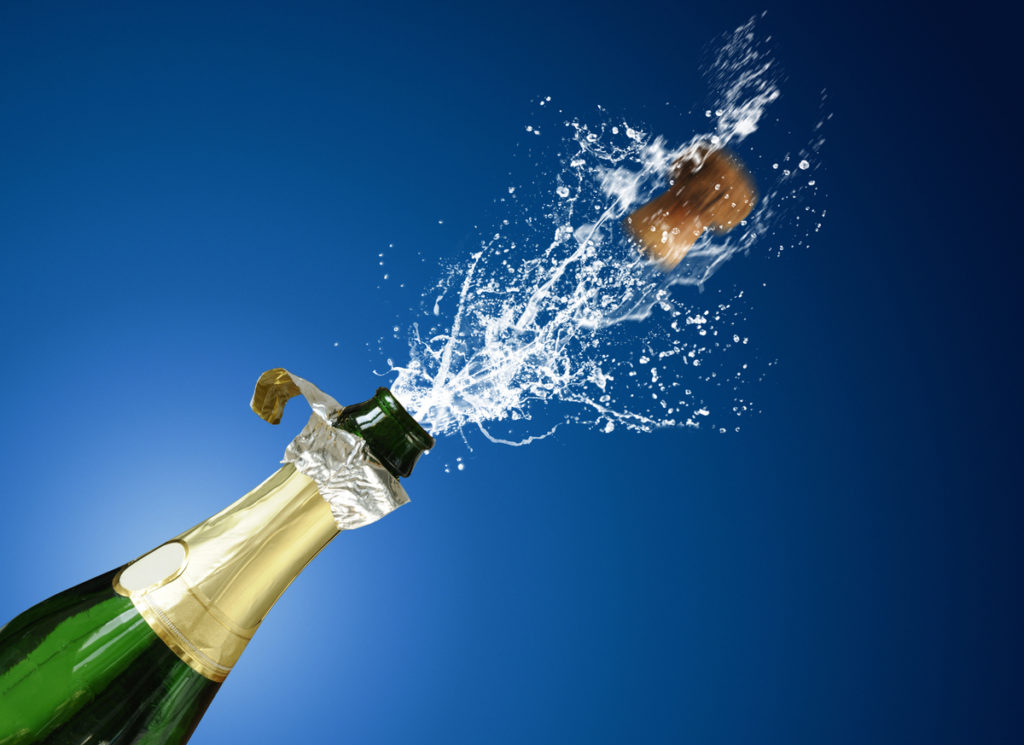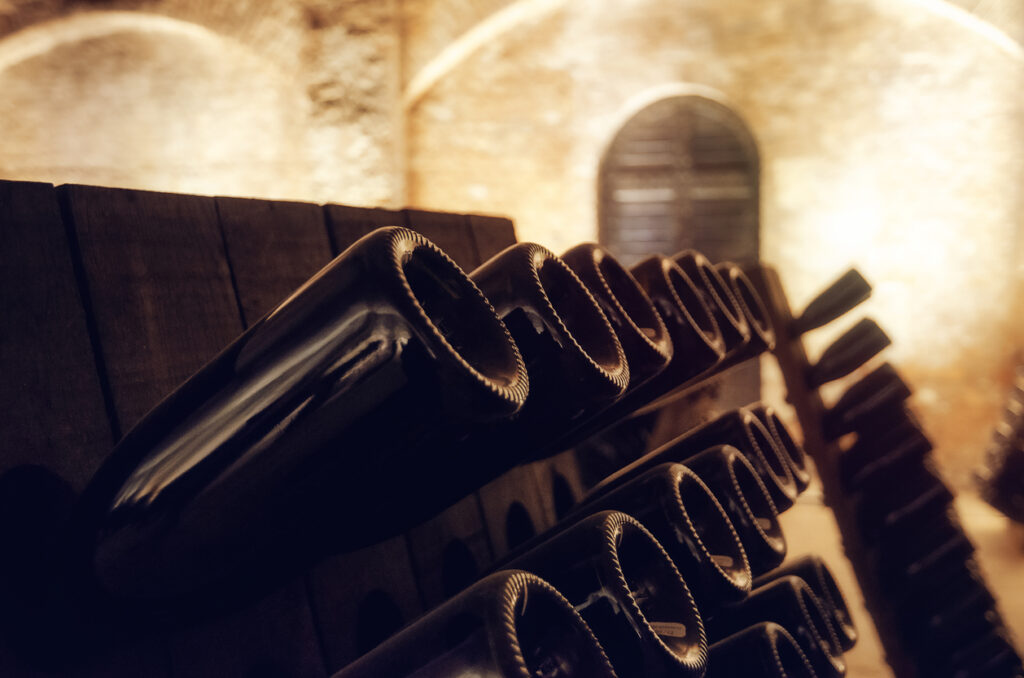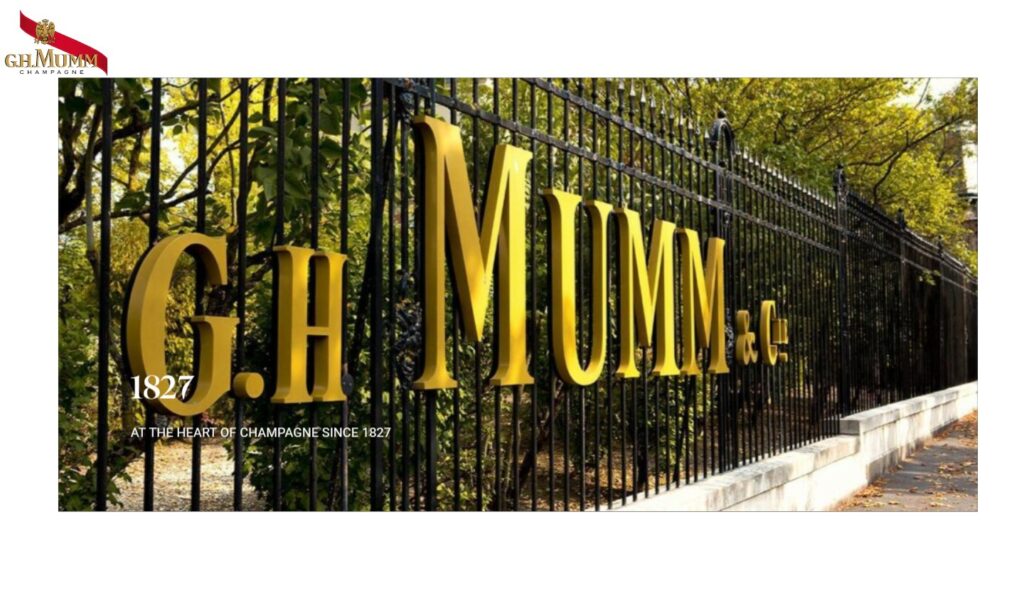Champagne is a drink that has been enjoyed for centuries, and it is often associated with celebrations and special occasions. However, there is some confusion about whether Champagne is a wine or not. The answer is yes, Champagne is a wine. It is a sparkling wine that is made using a specific method and comes from the Champagne region of France.
Champagne is made from the same grapes as other wines, but the production process is what sets it apart. The traditional method of making Champagne involves a second fermentation that happens in the bottle, which creates the small bubbles that Champagne is famous for. This process, called the méthode champenoise, is what gives Champagne its unique taste and texture.

Is Champagne more than a Sparkling Wine?
Some people argue that Champagne is not a wine because it is carbonated, but this is not true. Carbonation is simply a characteristic of the drink, and it does not change the fact that Champagne is made from wine grapes and is a type of wine. Whether you prefer your Champagne dry or sweet, there is no denying that it is a delicious and sophisticated drink that is perfect for toasting to life’s special moments.

What is Champagne?
Champagne is a type of sparkling wine that is produced in the Champagne wine region of France. It is made using a specific production process that is regulated by French law. Champagne is known for its bubbles and sparkling wine and champagne is often associated with celebrations and special occasions.
The Production Process
The production process of Champagne is unique and involves a second fermentation process that creates the bubbles. The grapes used to make Champagne are typically Chardonnay, Pinot Noir, and Pinot Meunier. The grapes are harvested and pressed, and the grape juice is fermented into wine. The wine is then blended and bottled with a mixture of sugar and yeast, which causes a second fermentation process to occur in the bottle. This creates the bubbles that Champagne is known for.
Storage over lies
After the second fermentation process is complete, the Champagne is aged in the bottle for a minimum of 15 months for non vintage champagne (NV). Vintage Champagnes are aged for several years. This gives non vintage champagnes a fruitier less bready tast. In Vintage champagnes you find bready, nutty and toasty aromas due to the long storage over dead lies.

Riddling of Champagne
The Champagne is then riddled, which is the process called champagne, of turning the bottles upside down and rotating them to move the sediment to the neck of the bottle. The sediment is then removed through a process called disgorgement, and the bottle is topped up with a mixture of wine and sugar, called the dosage.
Types of Champagne
There are several types of Champagne, and they are classified based on their sweetness level:
- Brut Nature: The driest type of Champagne, with no added sugar.
- Extra Brut: Very dry Champagne, with less than 6 grams of sugar per liter.
- Brut: Dry Champagne, with less than 12 grams of sugar per liter.
- Extra Dry: Slightly sweeter than Brut, with 12 to 17 grams of sugar per liter.
- Demi Sec: Sweet Champagne, with 32 to 50 grams of sugar per liter.
- Doux: The sweetest type of Champagne, with more than 50 grams of sugar per liter.
The sweetness levels as for example brut nature or demi sec are adopted for other sparkling wines all over the world.

Vintage vs non vintage champagne
Champagne has been a symbol of celebration and luxury for centuries, with the bubbly beverage often seen as a sign of success and sophistication. But when it comes to selecting the perfect bottle, there is still some confusion about whether vintage or non-vintage is best. We will show you the differences between the two types of champagne, helping you make an informed decision when picking out your next bottle.

Brut Sans Annee or Non Vintage champagne
Non-vintage champagne is a popular choice for those who want to enjoy the taste and quality of champagne sparkling wines without breaking the bank. Unlike vintage champagne and sparkling others, non-vintage blends wines made from white grapes and wines made from black grapes. These wines are from multiple years to create a consistent flavor profile year after year.
This allows non-vintage producers to maintain high standards of quality while keeping prices affordable. The most common style for champagne is non vintage champagne.

It pairs well with a variety of foods, making it an excellent choice for social gatherings and events. Its fruity, floral notes make it a refreshing option on hot summer days, while its toasted nutty flavors are not too strong due to the shorter storage time over lies.
Vintage Champagne
These sparkling wines are produced from grapes of a single vintage and must be aged for at least three years before it can be released to the public. The aging process allows the flavors of the champagne to mature, resulting in sparkling wine with a rich and complex taste. In addition older wines are used for the blending of vintage champagne.
One of the things that makes vintage champagne so special is its rarity. Because it can only be made from grapes harvested in a particular year, there are only a limited number of bottles available each vintage. This exclusivity makes it highly sought after by collectors and connoisseurs alike.
We recommend vintage champagne only for experts as you need to know the taste and flavor of this sparkling wine. The aroma and flavor differ from non-vintage sparkling champagne as different grape varieties can be used.

Grape based classification
Champagne can also be classified based on the grapes used to make it. Blanc de Blancs Champagne is made entirely from Chardonnay grapes, while Blanc de Noirs Champagne is made from Pinot Noir and Pinot Meunier grapes. Rosé Champagne is made technically sparkling wines by adding a small amount of red wine to the blend, giving it a pink color.
Blancs de Blancs Champagne
Blancs de Blancs Champagne is a type of champagne that is made using only white grapes. These grapes are known as Chardonnay and they are grown in the Champagne region of France. The manufacturing process for Blancs de Blancs Champagne is complex, but it results in a delicious, high-quality product.

The first step in manufacturing Blancs de Blancs Champagne is to harvest the Chardonnay grapes. These grapes are carefully selected for their flavor and quality. They are then pressed, with only the juice being used to make the champagne. This juice undergoes fermentation twice, with the second fermentation taking place inside a bottle. Once this process is complete, the champagne is aged for several months or even years before it’s ready to be consumed.
Blancs de Noirs Champagne
Blancs de Noirs Champagne is an exquisite drink that has a unique taste and colour. It is made from red grapes, but the skin is removed before fermentation, which results in a white wine. The grapes used to manufacture this champagne are mainly Pinot Noir and Meunier, which are known for their rich flavours and aromas.
The process of making Blancs de Noirs Champagne involves careful selection of the grape berries to ensure only the highest quality ones are used. Once three grapes are harvested, they go through pressing to extract the juice, which undergoes primary fermentation.

During this stage, yeast converts sugar into alcohol creating a base wine with lower alcohol content than most wine varieties. After blending and secondary fermentation in bottles under controlled conditions (Méthode Champenoise), the champagne matures on yeast sediment for at least 15 months before disgorgement.
Rosé Champagne
Rosé Champagne is a type of bubbly wine that has gained immense popularity for its unique flavour and colour. It is made from the grapes grown in the Champagne region of France, where only specific grape varieties are allowed to be used. The two primary methods used for making Rose Champagne are the bleeding method and blending method.
Bleeding Method
The bleeding method involves allowing the juice to remain in contact with the grape skins for a short period, usually less than 24 hours. This enables some of the pigment from the skins to bleed into the juice, giving it a pink hue before fermentation. The juice is then fermented in stainless steel tanks or oak barrels before undergoing a secondary fermentation process inside individual bottles.
This method is also used for the manufacture of rosé wine.

Blending Method
On the other hand, blending method involves mixing white wine with red wine to create rose champagne. This method was introduced by Madame Clicquot in 1818 for the manufacture of rosé Champagnes.
If no grape or style is listed on the champagne bottle you can assume that the producer made typical champagne or a blend of all three champagne grapes in a white style.
The Champagne region
Within the Champagne AOC, there are five main sub-regions, which include the Aube (Côte des Bar), Montagne de Reims, Côte des Blancs, Côte de Sézanne, and Vallée de la Marne. Each sub-region has its distinct characteristics, which contribute to the diversity and complexity of Champagne wines.
Here is a brief overview of the five sub-regions:
Aube (Côte des Bar)
Primarily dominated by Pinot Noir grape production, wines from this region showcase red fruit notes and are known for their freshness and velvety texture. There are no grand cru champagnes from this area as it`s still a new area for champagne production.
Montagne de Reims:
Known for its chalky soil, this area is heavily planted with Pinot Noir and is famous for its robust, full-bodied Champagnes. 10 of the 17 grand cru vineyards in the champagne are located here. The Krug champagne house uses grapes from this area.

Côte des Blancs
Home to the Chardonnay grape, wines from this area typically offer lively citrus and green apple flavors with high acidity, making them ideal for aging. In the Côte des Blancs area focus is put on Blanc de blancs champagne and sparkling wine production. You can find 6 grand cru vineyards in this area.
Côte de Sézanne
A smaller region that primarily produces Chardonnay, wines from this area are known for their bright fruit flavors and mineral qualities. The grapes are used for production of blends for the larger champagne houses.
Vallée de la Marne
Pinot Meunier dominates this area, and the wines produced are characterized by their fruity, aromatic, and accessible nature. Only 1 grand cru vinyard is located in this area. It`s in Aÿ outside Erpernay.
The classification of Champagne vineyards is based on a hierarchy that reflects the quality of the vineyards and the grapes produced. This system helps to determine the price of grapes and is an essential factor when considering the overall quality of Champagne wines. The classification rate ranges from 80% to 100%, with 100% being the most exceptional vineyards.
Grower Champagne vs Champagne Houses
When it comes to Champagne, there are two main categories: Grower Champagne and Champagne Houses. Grower Champagnes are the sparkling wine produced by independent vineyards that grow their grapes and make their wine using their own grapes. On the other hand, Champagne Houses (also known as négociants) source their grapes from multiple vineyards and blend them together to create their wines.

One of the most popular names in the world of Champagne are Moët & Chandon or Veuve Clicquot, well-known houses that produce some of the most iconic bottles in the industry.
Their wines are known for being consistent and high-quality year after year, which has helped earn them a devoted following. However, with a focus on blending grapes from different vineyards to achieve their signature taste, they may lack some of the unique character found in Grower Champagnes.
Société de récoltants
Société de Récoltants Champagne is an association of small winegrowers who cultivate the vineyards in Champagne. The S.R.C was founded in 1901 with the aim of creating a platform for small farmers to collectively sell their grapes and wines under one label. Since its inception, the S.R.C has been instrumental in promoting the interests of these small growers and preserving their heritage.
The S.R.C currently consists of more than 200 members who own around 400 hectares of vineyard land. These members are located in various villages throughout Champagne, including Ay, Bouzy, Mareuil-sur-Ay, and Verzy. Each member produces their own wines but they all adhere to strict quality control standards set by the association.
One unique feature of Société de Récoltants Champagne is that it allows consumers to discover rare and exclusive champagnes that cannot be found elsewhere.

Champagne vs Wine
The Differences
Champagne and wine are both alcoholic beverages, but they differ in several ways. Champagne is a sparkling wine produced exclusively in the Champagne region of France, while wine is produced in many regions around the world. The production process of Champagne is also different from that of wine.
Champagne method
Champagne is made from a blend of three grape varieties: Chardonnay, Pinot Noir, and Pinot Meunier. The grapes are harvested by hand and pressed gently to extract the juice, which is then fermented in stainless steel tanks or oak barrels. After the first fermentation, the wine is bottled with additional yeast and sugar to undergo a second fermentation in the bottle. This process, known as the méthode champenoise, creates the fine bubbles used in Champagne.
Finished Wine
Wine, on the other hand, can be made from a variety of grapes, including Cabernet Sauvignon, Merlot, Pinot Noir, Chardonnay, and Sauvignon Blanc. The grapes are harvested, crushed, and fermented in tanks or barrels. Some wines undergo a second fermentation in the bottle, but this is not a common practice.

Another difference between Champagne and wine is their alcohol content. Champagne typically has a lower alcohol content than wine, with an average of 12% alcohol by volume, while wine can have an alcohol content ranging from 10% to 15% or higher.
Similarities
Despite their differences, Champagne and wine also share some similarities. Both are made from fermented grapes and can be enjoyed as an aperitif or paired with food. They also come in a range of styles, from dry to sweet, and can be still or sparkling.
Both Champagne and wine can also be aged, although the aging process for Champagne is typically longer. Champagne must be aged for a minimum of 15 months, while some wines can be consumed immediately after bottling.
Finally, both Champagne and wine can be expensive, with prices ranging from a few dollars to several thousand dollars per bottle, depending on the quality, age, and rarity of the wine.
Champagne as a Wine
Champagne is a type of wine that is known for its bubbly and effervescent nature. It is produced in the Champagne region of France and is made using a specific set of rules and regulations. While many people associate Champagne with celebrations and special occasions, it is important to understand that it is a wine just like any other.

Grapes Used for Champagne
Champagne is made using a blend of three grape varieties: Chardonnay, Pinot Noir, and Pinot Meunier. Chardonnay is a white grape variety that is known for its crisp and refreshing flavor profile. Pinot Noir and Pinot Meunier are red grape varieties that are used to add body and structure to the wine. The exact blend of grapes used can vary depending on the producer and the style of Champagne being made.
Taste and Aroma
Champagne is known for its unique taste and aroma. This sparkling wine typically has a light, crisp, and refreshing flavor profile with notes of citrus, green apple, and toast. The bubbles in Champagne help to enhance the wine’s aroma and flavor, thus making sparkling wine make it a popular choice for toasting and celebrating. The exact taste and aroma can vary depending on the producer, the blend of grapes used, and the aging process.
Overall, Champagne is a type of wine that is known for its bubbly and effervescent nature. It is made using a specific set of rules and regulations and is produced using a blend of three grape varieties: Chardonnay, Pinot Noir, and Pinot Meunier. The taste and aroma of Champagne can vary depending on the producer and the style of Champagne being made, but it typically has a light, crisp, and refreshing flavor profile with notes of citrus, green apple, and toast.

Conclusion
After examining the characteristics and production process of Champagne, it is clear that it is not all sparkling wine but indeed a type of wine. While it may have unique qualities that distinguish it from other wines, such as its carbonation and specific grape varieties, it is still made from fermented grapes and falls under the broad category of wine.
It is important to note that not all sparkling wines are considered Champagne. In order to be labeled as Champagne, the wine must come from the Champagne region of France and follow specific production guidelines. Other sparkling wines produced outside of this region may have their own unique names and regulations.
Despite its association with luxury and celebrations, Champagne can be enjoyed in a variety of settings and occasions. Its versatility in pairing with different foods and its range of sweetness levels make it a popular choice for many wine enthusiasts.
Overall, while Champagne may have its own distinct characteristics and regulations, it is still a type of wine. Its unique qualities and rich history make it a beloved and iconic beverage around the world.

